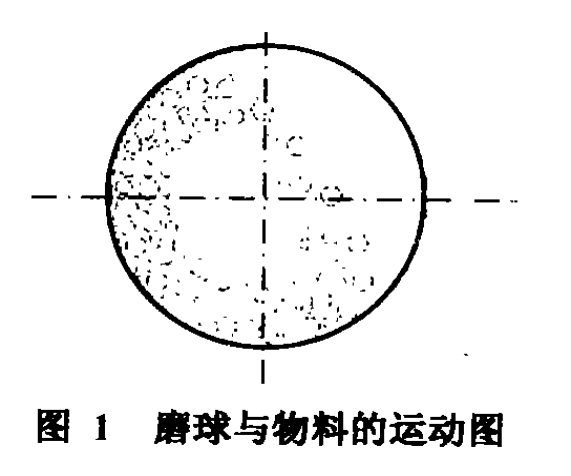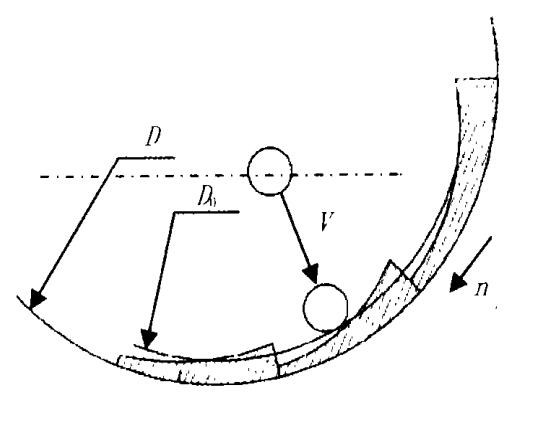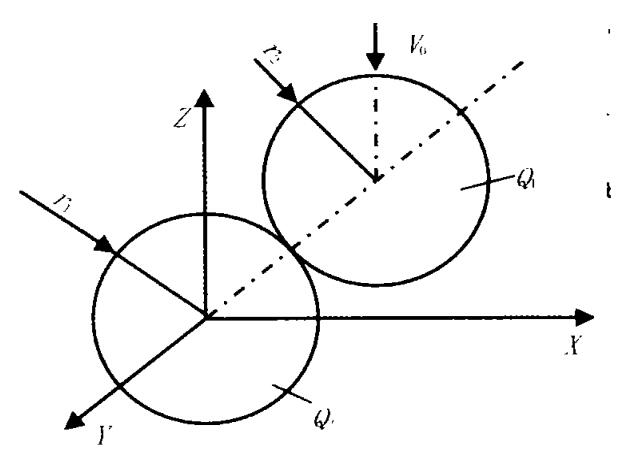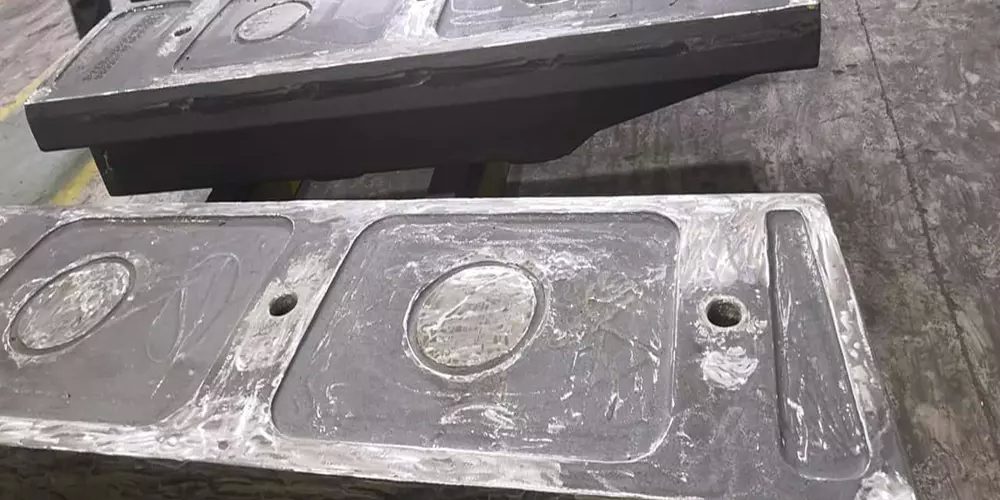The ball mill liners and grinding media are the largest consumption of wear-resistant iron and steel parts with an annual consumption of 2 million tons in China. With the development of China’s economic construction, the demand for cement is increasing year by year, and the consumption of wear-resistant materials is also increasing correspondingly, which will consume more metals and increase the production cost of cement. For the cement with special requirements (such as white cement), the quality of cement will be reduced, and the production can not be carried out smoothly. According to the cement output in 2003, more than 60000 tons of high-quality wear-resistant steel are needed for mill liners only. Moreover, the materials used for lining board production in China are uneven, and the actual consumption can be nearly 100000 tons. According to the characteristics of the cement industry, this paper carefully analyzes the working environment and wear failure reasons of cylinder liner, studies and selects ball mill liners material, and carries out production application.
Ball mill liners working conditions analysis
Force analysis
The main function of the ball mill liner is to protect the mill and use the convex peak of the liner to play the ball to grind and crush the material. Therefore, the main failure mode of the liner is abrasive wear under the repeated impact of small energy. Fig. 1 shows the motion diagram of grinding ball and material. In the movement of grinding bodies and materials, the grinding balls with large diameters are mainly distributed in the outer ring. Most of the grinding balls fall on the bottom of the material bed and only a small part on the liner plate. Due to the buffering effect of materials and the mutual impact between the materials and the grinding body, the running track of the grinding body is disturbed, and the falling point deviates, and the falling height is reduced. As a result, the impact of the abrasive body on the liner is greatly reduced, the impact times and the impact frequency are increased.

Fig. 1 shows the motion diagram of grinding ball and material.
The impact of the grinding ball on the ball mill liner is shown in Fig. 2. The impact point diameter D0 of the ball mill is smaller than the effective diameter D of the mill. Through analyses, it is determined that most of the grinding bodies in the bin only hit the lining plate after several times of impact and folding. Therefore, the impact on the lining plate is far less than the impact energy produced by the vertical falling object of 0.95 D (usually the thickness of the lining plate accounts for 0.5 % of the effective diameter).

Fig 2.The impact of the grinding ball on the ball mill liner
Figure 3 shows the relative position of grinding balls. When the ball is brought down to a certain height by the rotating ball mill liner, only when x > R1 + R2, the movement direction V0 of Q1 will not change and form a direct impact on the liner; when x = R1 + R2, Q1 and Q2 pass each other, and the movement direction V0 of Q1 will not change greatly, However, a small amount of friction will reduce the impact on the liner, and most of the cases of x < R1 + R2 will not form a direct impact on the liner.
The main force of liner fracture caused by the impact of the abrasive body on the liner is the vertical component of tangential force between the surface of the liner and the contact point of the abrasive body. The size of this force is affected by the shape of liner; the movement state, speed, and direction of the abrasive body, which greatly weakens the strength of direct connection and improves the impact degree of the liner.

Figure 3 shows the relative position of grinding balls.
Ball mill liners geometry and installation status
In order to improve the service life of the liner, reduce the material consumption and production cost, it is very important to carry out reasonable structural design under the condition of meeting the requirements of the cement grinding process. The large mill imported by Jidong Cement Company, Hebei Taihang Cement Company, and other units has small lining plate size, large plate thickness and bolt free installation, which lays a good design foundation for the application of high hardness materials to lining plate, and makes it possible to greatly increase the service life of lining plate. At present, the design basis of high manganese steel is still used in the lining plate of ball mill in China. From the geometric structure, it is usually thin and large, and there is obvious stress concentration at the bolt installation hole. In order to ensure the stable application of the new type of wear-resistant casting material and give full play to its unique advantages, this point must be taken into account when adopting new high wear-resistant casting materials.
In addition, the installation quality also plays an extremely important role in the reliable service of high hardness materials. After a long time of experimental exploration, it is found that for the application of casting materials with high hardness and high wear resistance, the supplier and application unit of lining plate should cooperate well, so that the user can better understand the characteristics of the new material, and the lining plate can not be suspended or loosened during installation And can get a certain cushion effect. This is easy to do in the installation process of cement mill, which can effectively ensure the good wear resistance of the lining plate.
Main failure modes and analysis of common ball mill liners materials
Up to now, nearly half of the lining materials of ball mill in the domestic cement industry are still made of ordinary high manganese steel. The main failure modes of high manganese steel ball mill liners are as follows:
Fracture failure: the ball mill liner is greatly impacted by the grinding body and materials, especially in the situation of large-scale development of high-efficiency and energy-saving cement mill, the impact energy of lining plate increases. Although the toughness of high manganese steel is very good, the current supply quality can not be guaranteed very well, for example, the carbon content is too high, the manganese carbon ratio is improper, and the water toughening treatment has problems, the fracture failure will occur.
Protrusion deformation: the volume of high manganese steel liner is increased due to the continuous impact of abrasives and materials. At the same time, due to the extension of plastic materials caused by impact, the thickness of mill liner decreases, and the circumferential dimension increases. However, the circumferential dimension of the liner is limited by the overall dimension of the ball mill, and there is not much expansion space to cause the liner to protrude, As a result, the fastening bolts are broken and some lining plates fall off. This phenomenon often occurs in larger mills and in smaller mills.
Wear failure: abrasive wear is one of the main forms of ball mill failure. Even if the lining plate working in the first chamber of large grinding mill bears large stress and the surface is easy to produce work hardening, the hardening layer is very thin. Under the repeated action of abrasive, the metal which is extruded and bulged and the hardened layer impacted by large abrasive edges and corners is easy to crack and peel off. It is found that there is more friction between the plow board and the surface of the plow board under the condition of grinding and hardening.
Through the analysis of the working condition of the liner and the failure analysis of the high manganese steel liner, we realize that it is safe and effective to select the material with high hardness and high wear resistance with good comprehensive mechanical properties according to the working conditions of the cement mill.
Ball Mill Liners Material Selection
Material selection conditions
Most of the ball mills used for cement production are tube mills with length diameter ratio L / d > 2.5. The mill has a coarse grinding bin and a fine grinding bin (some of which are three bins). The coarse grinding bin is mainly used for crushing and the fine grinding bin is mainly for grinding. The liner plates of the primary mill are mainly stepped liner and wavy liner, and the liner plates of some new high efficiency and energy-saving mills are not separated from their basic forms. The main forms of the fine grinding bin are pattern lining plate, small corrugated lining plate, and flat-lining plate. The effect of the coarse grinding chamber and fine grinding chamber is different, and the ball diameter of the grinding body loaded is different, and the impact on the lining plate is also very different. With the same mill diameter, the diameter of the grinding body in the coarse grinding chamber is large, the material fragmentation is also large, the impact on the lining plate is large, and the wear speed is high; the situation of the fine grinding bin is much better. When choosing lining materials, different materials must be determined according to different conditions.
Main problems to be considered in the selection of ball mill liners materials
- The relative wear resistance or service life should be high;
- It is very important to have proper strength and toughness to ensure the safety and reliability of the liner in service;
- In addition to the production cost of the liner itself, the installation cost, shutdown cost, labor cost, auxiliary material consumption and productivity of the liner replacement should be considered.
Material Selection
Industrial growth increases the consumption of wear-resistant parts and then stimulates and drives the development of the wear-resistant material industry. The production process, mechanical properties, and industrial application effect of 40-50 typical brands of wear-resistant steel materials have been industrialized, and the process characteristics of various varieties and small batch have been formed. After many years of production and research of wear-resistant materials, it is considered that the application of multi Alloying High Chromium Cast Iron in the coarse grinding bin of mill with size less than or equal to 3.0 m can be used safely and stably with excellent wear resistance effect and comprehensive economic effect; The application of medium carbon low alloy chromium manganese steel in the roughing bin of the mill with a diameter of fewer than 3 m has good wear resistance and appropriate comprehensive mechanical properties. In general, many kinds of wear-resistant steel materials can be selected for the fine grinding bin, and the medium carbon low-alloy chromium manganese steel developed and produced by us has achieved good results. If there is a strong investment ability, the application of high chromium cast iron can achieve the effect of no replacement for many years, and the comprehensive economic and social benefits are more prominent.
- high chrome alloy steel. C 2.2-2.8%, Cr 13-16%, Si 0.5-1.0%, Mn 0.6-1.2%, 0.5-1.3 Mo.
- Alloy steel. C 0.38-0.52%, Cr 1.6-2.5%, Si 0.5-1.2%, Mn 1.5-2.4%, 0.2-0.5 Mo.







